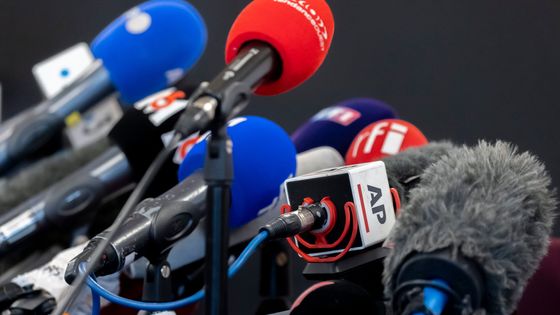
In the reception hall of the Lille local mission, eight young people follow a short exhibition on false information. This is followed by raising awareness of the dissemination of “fake news” on social networks, their consequences, their dangers, how to analyze them, understand them and not fall into the trap.
Most of these young people are in civic service, in connection with the local mission. This is the case of Elisa, 20 years old. She leads dance and theater workshops at the Regional House for the Environment and Solidarity, for those who cannot afford activities in other structures. She follows the news, via social networks, and only thanks to this: “There are shares on Snapchat and Instagram. I see publications from Le Figaro, however, I am not their account.”
Follow the news on Twitter
Elisa is able to cite several traditional media, print media, radio, TV, she vaguely knows their editorial line: “For me, there is no longer any need to follow the news to get it. We can rely on social networks to then get our information. We don’t have to follow accounts like Le Monde.”
For the past few months, Antoine, 24, has been working in a library in Lille, where he manages social networks. He mainly watches news about the video game world, his passion. And thanks to Twitter, he gets informed, follows the news, but without really wanting to: “I know what’s going on just with a hashtag. When I see ‘strike’ or ‘reform’. I click on it to see in detail what it is. I don’t have the definitive information. C Rather, it is awareness of an event.”
If the information interests him, Antoine will then do further research on Google or other networks. It also looks at who the author of the tweet is. Last resort, “I will see the articles online”on the “official press“, as he says.
According to a survey by the Ipsos institute38% of those under 30 claim a strong attraction to current affairs, while 46% are only interested in it depending on the subject or the context.
The never-opened paper diary
On the other hand, when we ask these young people the last time they opened a paper newspaper, their facial expression is enough to grasp the answer: they roll their eyes: “Uh, never. I don’t even remember the last time I opened a diary”, says Antoine. To the question, “is it corny?”,* Elisa laughs and answers: “No, but a little yes, personally, I will not open it myself.” “I don’t read the newspaper”adds Alice, high school student in first in Nanterre. “A newspaper will put me off, with the large text aspect. I will have more difficulty finding my way around.”
They don’t watch the 8 p.m.
And the radio in all this? Alice is the only one to listen to it, or rather to hear it, in the morning when she wakes up, but without knowing exactly which antenna is: “My mother listens to the radio in the morning, in the kitchen and the bathroom. When I pass, I hear news. When I’m interested, I stop to listen.”
Getting information on television is not a reflex either for these young people we met, like Antoine: “I haven’t turned on the television at all for two or three years. It no longer interests me, there is only bad news. TF1, 8 p.m., no.” The high mass at 8 p.m. is no longer for them. And yet, they grew up with 20-year-old Alan quitting TV during his first year of medical school. He is now in civic service at the local mission of Lille: “When I was little and I lived with my parents, I watched the 8 p.m. news. But since I had my first “home”, this is no longer the case. Alan is passionate about criminal investigations, and he learns mostly through word of mouth, when he talks with his friends. He also sees news on his Facebook feed and TikToK.
Prioritize “young media”
In the living room of Imane, 16, the television is on with the news channels continuously. Hard to resist. This high school student watches, follows certain debates, then discusses them with her parents and her brother: “There are subjects on a loop, like the war in Ukraine. At the beginning, I watched the debates more, I like to have different opinions. It is especially the images that are captivating.”
Between videos and text, Imane has her preference: “When I watch videos on YouTube, it gives information, not an opinion, unlike BFM.” Imane has abandoned social networks, “too entertaining”, she judges. For information, she prefers YouTube. She watches videos of Brut, Le Parisien, but also Hugo Décrypte. This YouTuber journalist much appreciated by young people. “He talks to us, and deals with the subjects that concern us, there is no false information”believes Imane, which is not the case according to her for the traditional media.

